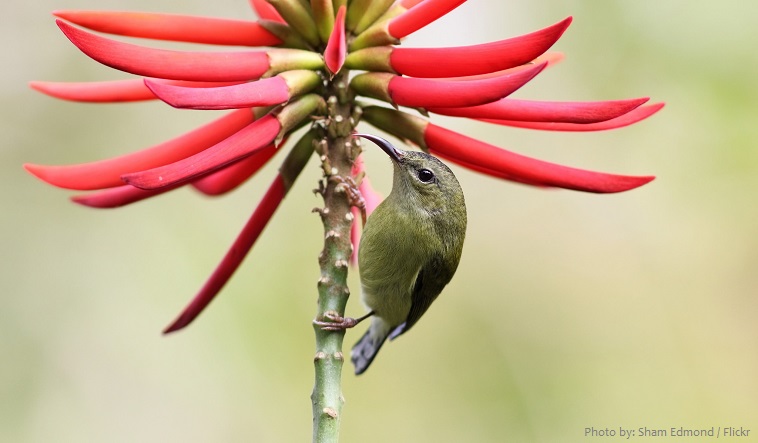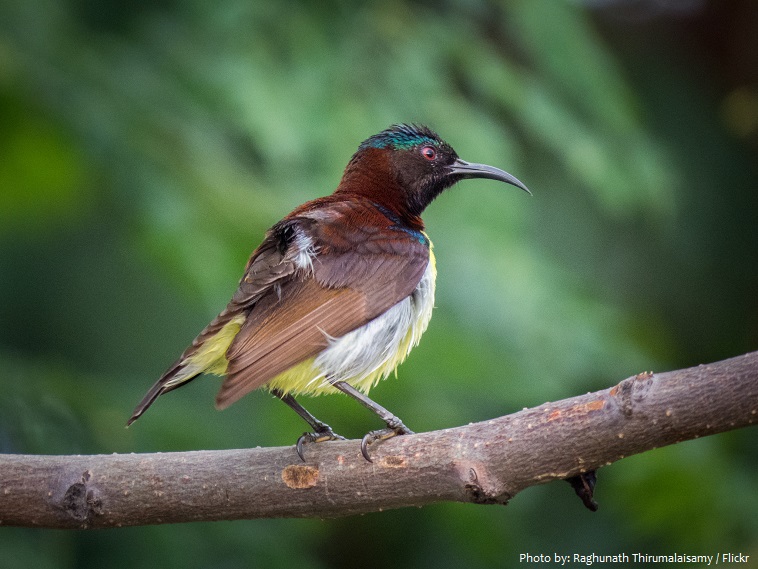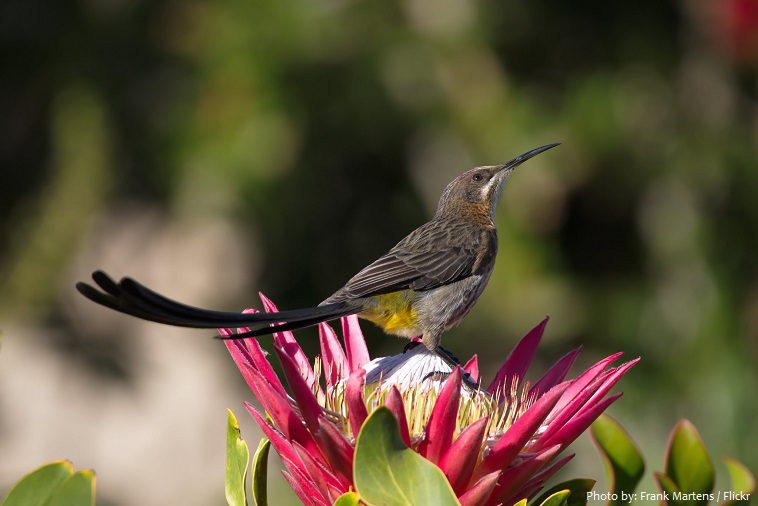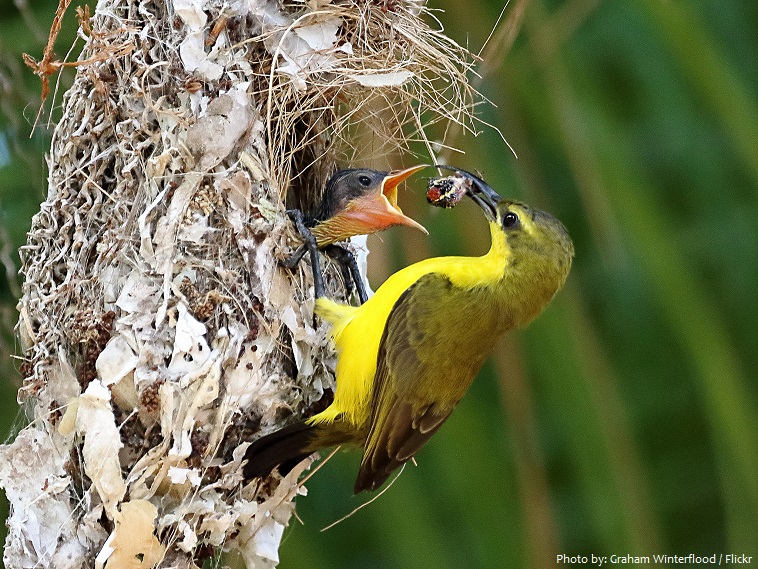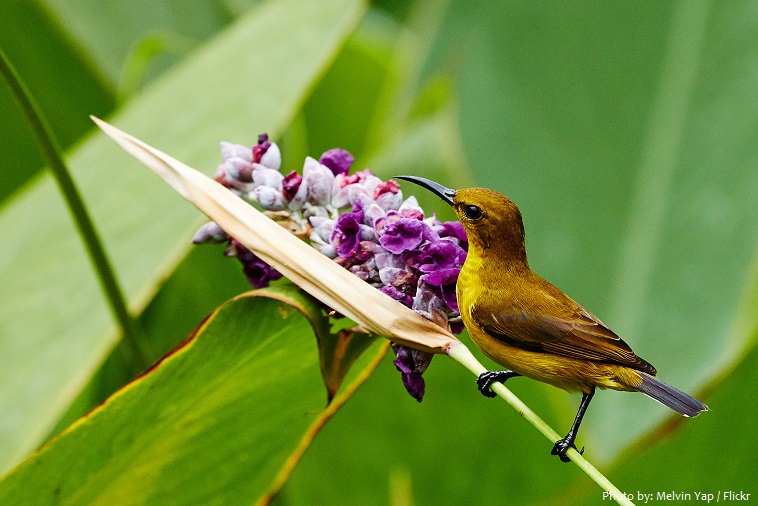The sunbirds are small, slender passerines from the Old World.
They are found through most of Africa to the Middle East, South Asia, South-east Asia and southern China, to Indonesia, New Guinea and northern Australia. Species diversity is highest in equatorial regions.
There are 132 species in 15 genera.
Like the unrelated New World hummingbirds, to which sunbirds are often compared, sunbirds have long and slender, highly curved bills, tube-shaped tongues, and feed primarily on nectar and small insects.
Sunbirds have lifespan up to 16 years.
They ranges in size from the 5-gram black-bellied sunbird to the spectacled spiderhunter, at about 45 grams.
Many species are brightly colored and have a metallic sheen. Males are usually more brightly colored than females.
Their flight is fast and direct, thanks to their short wings.
Sunbirds have little or no sense of smell and depend solely on their keen sense of sight to forage for flowers.
These diurnal birds spend much of the day seeking blooming plants, especially along forest edges and clearings, which may contain more feeding opportunities. Beautiful sunbirds require a steady stream of energy intake to meet their metabolic needs.
Experts say these birds visit flowers of more than 20 different plant genera, including acacia, aloe, jacaranda, and lantana. They typically forage singly and occasionally in small groups. Males chase intruders away from nectar sources in their territory.
They also spend time preening their feathers and bathing in birdbaths or natural water sources.
A sunbird that breed outside of the equatorial regions are mostly seasonal breeders, with the majority of these species breeding in the wet season.
Nests are constructed by female sunbirds. They are compact, purse-shaped shelters suspended from tree branches with a single central entrance. A variety of fibers are used in nest construction, including bark, twigs, dried grass, leaves, vegetable down, plants stems, feathers, and snakeskin. It is tightly bound with spider’s silk, especially at the entrance and where it is attached to a branch.
In most species the female alone constructs the nest. They are compact, purse-shaped shelters suspended from tree branches with a single central entrance. Up to four eggs are laid. The female builds the nest and incubates the eggs alone, although the male assists in rearing the nestlings. In the spiderhunters both sexes help to incubate the eggs.
Sunbird generally occur in pairs or occasionally in small family groups. A few species occasionally gather in larger groups, and sunbird will join with other birds to mob potential predators, although sunbirds will also aggressively target other species, even if they are not predators, when defending their territories.
The nests are sometimes “decorated” with lichen, while some have a “porch” or trailing “beard” of vegetation hanging from the bottom. The inside may be softened with feathers, vegetable down, or even human litter like paper and lightweight plastic. Within this shelter, a female will lay a clutch of one to two fragile eggs, which she will incubate for about two weeks.
Tiny hatchlings may have short, gray down and yellow stripes along the jawline. They are likely fed exclusively spiders. Fledging period is 14 to 18 days, and they gradually venture farther from the nest. Parents continue to feed the youngsters for about two weeks.
Their varieties of vocalizations indicate arrival at foraging sites and defense of territories, advertise to mates, and communicate with offspring and conspecifics.
These birds look at their reflection in mirrored surfaces and windows.
Overall the family has fared better than many others, with only seven species considered to be threatened with extinction.

